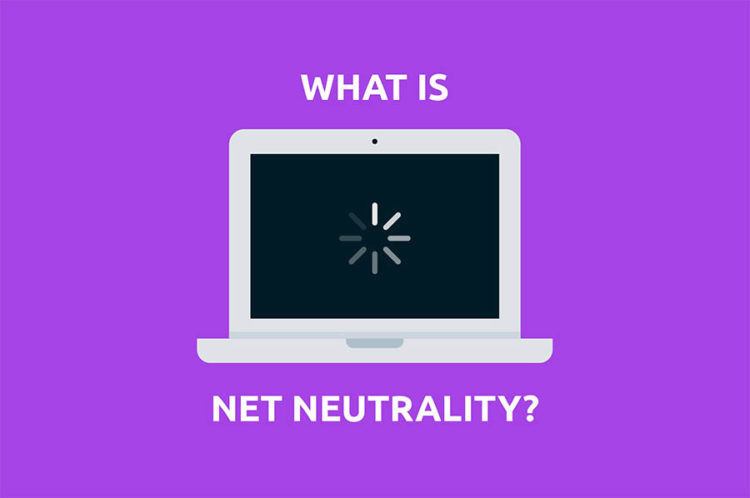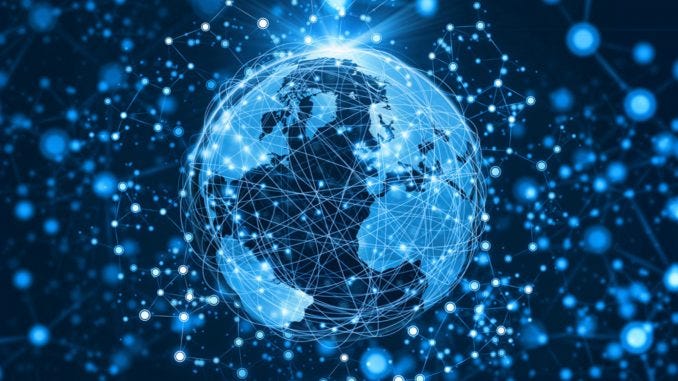
The human race's appetite for information and knowledge arrived at its most evolved form with the invention of the internet. This super network transformed the most basic elements of everyday life and brought about a new, exciting chapter in innovation. What makes the internet a crutch of 21st century civilization is the blazing speed of access to this ultimate database. This is known as network neutrality, a long-standing principle that internet service providers (ISPs) must provide all content requested by its consumers at equal speed. Many in America were not aware of this concept until a recent move by the Trump administration and FCC Chairman Ajit Pai who repealed these rules in 2018. In order to understand why the move was received with such vehement opposition, we need to take a deeper dive into the inner workings of mankind's greatest creation.
The term "net neutrality" first appeared in a 2003 academic essay written by Columbia University law professor Tim Wu entitled, "Network Neutrality, Broadband Discrimination." In the essay, Wu explained that it would be a future struggle to ensure a free and open internet could exist despite corporate interests, "Communications regulators over the next decade will spend increasing time on conflicts between the private interests of broadband providers and the public’s interest in a competitive innovation environment centered on the Internet."
Net neutrality forces all content into the same lanes (Graphic Courtesy: BBC News)
Perhaps the most popular analogy to the concept of net neutrality could be made to cars driving on a highway. The owner of the highway is the Internet Service Provider (ISP) and the cars are the various content providers. Under the concept of net neutrality, big cable companies such as AT&T or Comcast are obligated to have all internet traffic travel to customers at the same speed. Tech giants such as Google, Amazon, or Facebook can't push their content to the front of the line.
Behold, the Silicon Valley Hyperspeed Lane which can appear without Net Neutrality
Yet when net neutrality disappears, companies have the ability to bid up their content and thus push it across other platforms easier. As a result, this creates an additional big tech fast lane so they can reach consumers quicker than they previously could. Some ISPs favor this model by arguing less government regulation plus a premium charge on reaching consumers will allow for more competition and better infrastructure since the big tech companies take up such a large amount of bandwidth anyways. However, it appears as though the result could be the opposite effect in that Silicon Valley could outgun smaller sources and corner the market on information little by little thus eliminating competition.
Perhaps the most famous case of rising content costs came in 2014. In those seemingly distant days, Netflix was really starting to hit their stride with streaming and it was becoming clearer every day that they were the future of TV. Of course, Netflix's wild popularity meant it thinly stretched the bandwidth of ISPs. Download speeds tanked and customers began to complain to their providers about the abysmal service. Comcast and other providers insisted they did not slow down content but instead demanded Netflix help improve the infrastructure to improve the customers' experience.
If you take a close look, you can see right where the deal came into effect in early 2014
Sure enough, Netflix bent the knee and reached an agreement in which they would pay more to Comcast in order to reach consumers properly but not preferentially. A New York times article on the deal observed that this also came 10 days after Comcast's $45 billion acquisition of Time Warner Cable, putting the Philadelphia-based cable juggernaut in roughly one out of every three homes in America for both TV and internet. The deal raised many eyebrows around the business world, particularly because the settlement amount was not publicized. Tim Wu commented on the deal as well, “This is the water in the basement for the Internet industry... I think it is going to be bad for consumers."
Later that same year, President Obama took action in order to preserve net neutrality. The legal precedent for doing so came from the Telecommunications Act of 1996. This act clearly defined two types of service: Title I providers were for information service whereas Title II providers were for telecommunications service. Obama began pushing the FCC to apply these rules to ISPs, “You don’t want to start getting a differentiation in how accessible the Internet is to different users. You want to leave it open so the next Google and the next Facebook can succeed.” In February of 2015, the FCC voted in favor of defining ISPs as Title II common carriers for providing internet which required them to treat all content the same. A federal court of appeals upheld the ruling in June of 2016. The internet was safe. Until....
The Trump administration went right to work using their platforms as referendums on the Obama administration's actions. Repealing this ruling of net neutrality was among them. Trump's appointee of Ajit Pai to FCC Chairman condemned the Title II regulations as an example of government overreach and argued this ruling would inhibit the infrastructure of internet access to rural areas. Pai pitched this proposal as a way of "restoring internet freedom" as ISPs could potentially expand without burdensome requirements relating to the treatment of internet traffic. On Dec. 14, 2017, the FCC reached a landmark ruling which changed the definition of internet service providers from Title II common carriers to Title I information services, effectively ending net neutrality. The ruling received major pushback on several social media platforms, with consumer groups feeling outraged that the rich and powerful companies were getting bailed out yet again. In response, Ajit Pai posted a video saying what people were still allowed to do on the internet. The original was taken down, but this backup copy of the video received 12,000 likes compared to an astonishing 283,000 dislikes.
So what's next for net neutrality? The election of Joe Biden has galvanized hope that perhaps the rules could be reversed again to reclassify ISPs under Title II. Biden already appointed former two-term commissioner Jessica Rosenworcel as acting chair of the FCC and still has one more confirmation to make. That confirmation would swing the balance of the FCC in favor of the Democrats and we very well could see the reinstating of net neutrality. Until then, the fate of the internet hangs in the balance...
Sources:
https://en.wikipedia.org/wiki/Net_neutrality
https://www.youtube.com/watch?v=zq-2Yk5OgKc (BBC video)
https://www.youtube.com/watch?v=LFhT6H6pRWg&feature=emb_logo
https://www.smithsonianmag.com/smart-news/heres-paper-popularized-net-neutrality-180949376/
https://www.aclu.org/news/free-speech/president-biden-the-time-to-restore-net-neutrality-is-now/
https://www.youtube.com/watch?v=fpbOEoRrHyU
https://www.nytimes.com/2014/02/24/business/media/comcast-and-netflix-reach-a-streaming-agreement.html




No comments:
Post a Comment